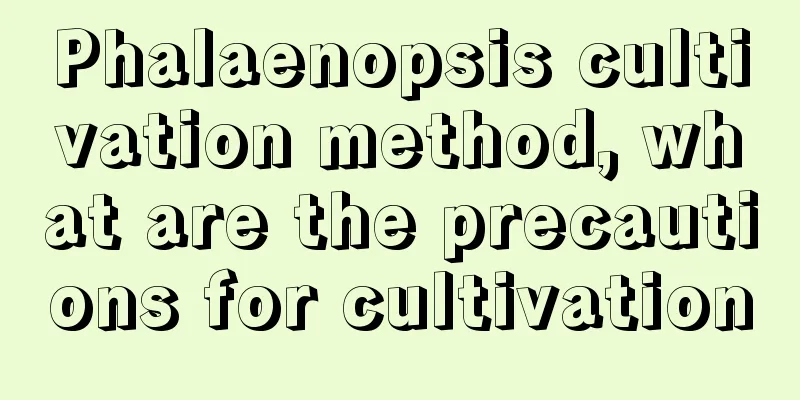Phalaenopsis cultivation method, what are the precautions for cultivation

1. Breeding methods1. Light: Phalaenopsis prefers shade, but the plant still needs to receive partial light. Especially before and after flowering, receiving proper light can promote flowering and make the flowers more colorful and lasting. In daily maintenance, you can place it in a place with diffuse light indoors, and provide shade in time when there is direct strong sunlight in summer. 2. Soil: Phalaenopsis has high requirements for soil, and needs slightly acidic soil with good drainage, good air permeability and fertility. 3. Temperature: If raised indoors, the daytime temperature should be controlled between 25-28 degrees, and the nighttime temperature should be controlled at around 18-20 degrees. 4. Watering: The principle of watering is “water when the soil is dry and water when the soil is wet”. It is best to water in the morning when it is clear and sunny, and the water temperature should be close to the room temperature. When the room is dry, you can use a sprayer to spray the leaves. However, it should be noted that when spraying water during the flowering period, do not spray water on the flowers. 5. Fertilization: The principle of fertilization is to apply less fertilizer and apply light fertilizer. When the orchid enters the growth period, it needs to be fertilized once a week. Stop fertilizing when the temperature is high in summer. In autumn, the growth rate of Phalaenopsis slows down and the frequency of fertilization needs to be reduced. 2. Precautions1. Phalaenopsis needs to be repotted once a year. Repotting in time can prevent the substrate from rotting and causing poor growth of Phalaenopsis, which is beneficial to the healthy growth of the plant. 2. Watering must be appropriate. Phalaenopsis likes moisture, but is very afraid of waterlogging, so watering must be moderate. Do not water too much. Check whether the soil in the pot is dry before watering. 3. Make sure to choose a breathable porous pot for planting. Choosing a flower pot with good air permeability can quickly drain excess moisture from the soil and reduce the occurrence of water accumulation in the pot. |
>>: How to grow gentian and what to pay attention to, when will it bloom
Recommend
Cultivation methods and precautions of Dracaena fragrans
The Dracaena fragrans itself is a relatively easy...
Does Patchouli prefer shade or sun?
Does Patchouli prefer shade or sun? Patchouli is ...
What is the national orchid of Clivia, and what is the difference between the national orchid and the Anshan orchid
1. What is The "national orchid" of Cli...
How to grow gardenia at home
Is it harmful to grow gardenia at home? Gardenia ...
Precautions for transplanting Kalanchoe
1. Transplanting time The best time to transplant...
Can the soil with rotten roots of green radish still be used?
1. Not recommended The adaptability of the green ...
How to propagate Schefflera
1. Seeding method For propagation by sowing, you ...
Cultivation methods and watering precautions of Areca palm (How to grow Areca palm more vigorously)
Areca palm is a large indoor potted green plant, ...
Management of the flowering period of large-flowered cymbidium (how long is the flowering period, can fertilizer be applied during flowering)
1. How long is the flowering period of cymbidium?...
Watering the flowers every day in summer is tiring. Learn from him and water the flowers automatically!
Infusion 1. Preparation: 1 plastic bottle, an inf...
What kind of soil can be used for growing vegetables on the balcony
Soilless cultivation In short, soilless cultivati...
How to grow multi-lobed bamboo
1. Breeding conditions 1. Soil: The multi-fissure...
How to prevent weasels when raising free-range chickens?
When raising free-range chickens , many farmers w...
Cutting propagation method of fairy finger
Cutting propagation - time The best time for cutt...
The efficacy and function of bilberry
1. Clear away heat and detoxify Aloe vera is cool...









